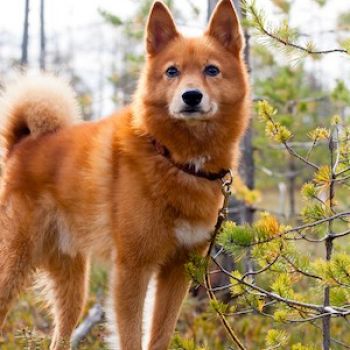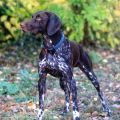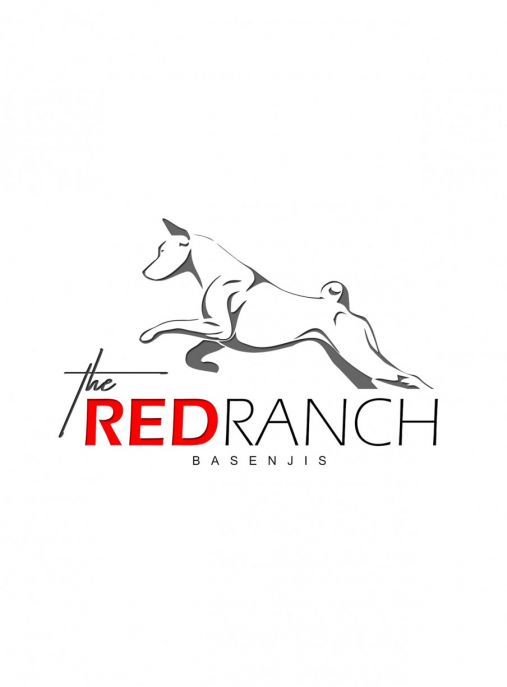The Finnish Spitz, also known as the Suomenpystykorva, is a charming and lively dog breed that hails from Finland. Renowned for its striking fox-like appearance and vibrant red coat, this breed is a true symbol of Finnish heritage. With its unique vocal abilities and exceptional hunting skills, the Finnish Spitz has become a beloved companion and a national treasure.
The history of the Finnish Spitz can be traced back to ancient times, where it was primarily used for hunting small game, such as squirrels and birds. This breed's lineage can be linked to the ancient Spitz-type dogs that were brought to Finland by migrating tribes thousands of years ago. Over time, these dogs adapted to the harsh Finnish climate and developed the distinct characteristics that we see today.
According to the FCI (Fédération Cynologique Internationale) typology, the Finnish Spitz belongs to Group 5, the Spitz and Primitive Types. This group includes other well-known breeds such as the Akita, Alaskan Malamute, and Siberian Husky. The Finnish Spitz is classified under Section 2, the Nordic Hunting Dogs, which also includes breeds like the Norwegian Elkhound and Swedish Lapphund.
The Finnish Spitz is a versatile breed that excels in various roles. Traditionally, it was primarily used for hunting, where its keen sense of smell and sharp eyesight made it an excellent tracker and retriever. Today, while still utilized for hunting purposes, the Finnish Spitz has also gained popularity as a family pet and show dog. Its friendly and sociable nature makes it a wonderful companion for individuals and families alike.
In terms of physical characteristics, the Finnish Spitz is a medium-sized dog with a well-proportioned body. Males typically stand between 17.5 to 20 inches (44 to 51 cm) at the shoulder, while females are slightly smaller, ranging from 15.5 to 18 inches (39 to 46 cm). The breed's weight usually falls between 25 to 35 pounds (11 to 16 kg). Its most distinctive feature is its dense double coat, which consists of a soft, dense undercoat and a longer, harsher outer coat. The coat's color is a vibrant shade of red, often described as "fox-red."
The Finnish Spitz has a life expectancy of around 12 to 15 years, which is relatively long for a dog of its size. This breed is generally healthy, but like any other breed, it can be prone to certain health issues such as hip dysplasia and patellar luxation. Regular exercise, a balanced diet, and routine veterinary care are essential for maintaining the Finnish Spitz's overall well-being.
One of the most fascinating aspects of the Finnish Spitz is its unique vocal abilities. Known as the "barking bird dog," this breed has a wide range of vocalizations that it uses to communicate with its human companions and during hunting. It has a distinctive bark called the "yodel," which starts with a series of sharp barks and transitions into a melodious, bird-like trill. This vocalization is not only charming but also serves as a way for the Finnish Spitz to alert its owner to potential threats or prey.
In addition to its vocal talents, the Finnish Spitz is an intelligent and independent breed. While it is generally eager to please its owner, it can also display a stubborn streak at times. Early socialization and consistent, positive reinforcement training are crucial for shaping this breed into a well-behaved and obedient companion.
In conclusion, the Finnish Spitz is a captivating and versatile breed that embodies the spirit of Finland. With its striking appearance, exceptional hunting skills, and unique vocal abilities, this breed has captured the hearts of many dog enthusiasts worldwide. Whether as a hunting partner, a show dog, or a beloved family pet, the Finnish Spitz continues to leave a lasting impression with its charm, intelligence, and unwavering loyalty.
The Finnish Spitz, also known as the Suomenpystykorva, is a charming and lively breed that hails from Finland. Renowned for their striking appearance and distinctive vocalizations, these dogs possess a unique character that sets them apart from other breeds. With their friendly and outgoing nature, Finnish Spitz dogs make excellent companions for active individuals or families.
One of the defining characteristics of the Finnish Spitz is their vocal nature. They have a wide range of sounds, from soft murmurs to sharp barks, and they are not afraid to use them. This trait stems from their history as hunting dogs, where they would use their voice to alert hunters to the presence of game. While this can be endearing, it is important for owners to understand that Finnish Spitz dogs may not be suitable for apartment living or areas with noise restrictions.
In terms of behavior, Finnish Spitz dogs are known for their intelligence and independence. They are quick learners and have a strong desire to please their owners, but they also have a stubborn streak. This means that training should be approached with patience, consistency, and positive reinforcement. Harsh training methods or punishment can lead to a disinterested or even defiant dog. Early socialization is also crucial to ensure that Finnish Spitz dogs grow up to be well-rounded and friendly adults.
Finnish Spitz dogs are generally good with children and other pets, but they may be reserved or aloof with strangers. This is not to be mistaken for aggression; rather, it is a reflection of their natural wariness towards unfamiliar individuals. Proper socialization from an early age can help mitigate any potential issues and ensure that Finnish Spitz dogs are comfortable in various social settings.
Exercise is an essential part of raising a Finnish Spitz. These dogs have a high energy level and require regular physical and mental stimulation to prevent boredom and destructive behavior. Daily walks, playtime, and engaging activities such as puzzle toys or obedience training sessions are all excellent ways to keep them entertained. A tired Finnish Spitz is a happy and well-behaved one.
Grooming a Finnish Spitz is relatively low maintenance. They have a dense double coat that sheds seasonally, requiring regular brushing to remove loose hair. During shedding seasons, more frequent brushing may be necessary to keep their coat in good condition. Additionally, their ears should be checked regularly for any signs of infection, and their teeth should be brushed regularly to maintain good oral hygiene.
In conclusion, the Finnish Spitz is a lively and intelligent breed with a unique character. They are vocal, independent, and require proper training and socialization to thrive. With the right care, exercise, and attention, Finnish Spitz dogs can make wonderful companions for those who appreciate their distinctive traits and are willing to invest time and effort into their upbringing.
The Finnish Spitz is a beautiful and intelligent breed known for its fox-like appearance and vibrant red coat. To ensure the health and happiness of your Finnish Spitz, it is essential to provide them with proper care and attention. Here are some tips on how to care for dogs of this breed, including what to do and what not to do:
1. Exercise: Finnish Spitz dogs are active and energetic, requiring regular exercise to keep them physically and mentally stimulated. Daily walks, playtime, and interactive toys are essential to prevent boredom and maintain their overall well-being. However, avoid excessive exercise in hot weather as they are prone to heat exhaustion.
2. Grooming: The Finnish Spitz has a dense double coat that requires regular grooming. Brush their fur at least once a week to prevent matting and remove loose hair. During shedding seasons, which occur twice a year, increase the frequency of brushing to minimize shedding. Additionally, trim their nails regularly, clean their ears, and brush their teeth to maintain good hygiene.
3. Socialization: Finnish Spitz dogs are known for their friendly and sociable nature. It is crucial to expose them to various people, animals, and environments from an early age to ensure they grow up to be well-rounded and confident dogs. Enroll them in puppy socialization classes and organize playdates with other dogs to encourage positive interactions.
4. Mental Stimulation: Finnish Spitz dogs are intelligent and thrive on mental challenges. Engage them in activities that stimulate their minds, such as puzzle toys, obedience training, and interactive games. Mental stimulation helps prevent behavioral issues and keeps them mentally sharp.
5. Health Care: Regular veterinary check-ups are vital to monitor your Finnish Spitz's overall health. Vaccinations, deworming, and flea/tick prevention should be administered as recommended by your veterinarian. Additionally, be aware of breed-specific health concerns such as hip dysplasia and progressive retinal atrophy (PRA). Regular exercise, a balanced diet, and maintaining a healthy weight can help prevent these issues.
6. Diet: Provide your Finnish Spitz with a high-quality, balanced diet that meets their nutritional needs. Feed them a combination of dry kibble and wet food, or a raw diet if preferred. Avoid overfeeding, as Finnish Spitz dogs can be prone to weight gain, which can lead to health problems. Consult your veterinarian for specific dietary recommendations based on your dog's age, weight, and activity level.
7. Training: Finnish Spitz dogs are intelligent and eager to please, making them relatively easy to train. Use positive reinforcement techniques such as treats, praise, and rewards to motivate and encourage good behavior. Consistency, patience, and early socialization are key to raising a well-behaved Finnish Spitz.
What not to do:
1. Do not leave your Finnish Spitz alone for extended periods. They thrive on human companionship and can become anxious or develop separation anxiety if left alone for too long.
2. Avoid harsh training methods or punishment-based techniques. Finnish Spitz dogs respond best to positive reinforcement and gentle guidance.
3. Do not neglect their grooming needs. Regular brushing and maintenance are essential to prevent matting and keep their coat healthy.
4. Avoid overfeeding or feeding them a poor-quality diet. Obesity can lead to various health issues, so monitor their weight and provide a balanced diet.
5. Do not skip regular veterinary check-ups. Early detection of any health problems can lead to better outcomes and a longer, healthier life for your Finnish Spitz.
By following these tips and providing your Finnish Spitz with love, care, and attention, you can ensure they lead a happy and fulfilling life as a cherished member of your family.
The Finnish Spitz, also known as the Suomenpystykorva, is a beautiful and distinctive breed of dog that hails from Finland. One of the most notable features of this breed is its unique coat color, which adds to its overall charm and appeal.
The common color of Finnish Spitz dogs is a vibrant and rich shade of red. This stunning hue is often described as a deep, fiery red or a warm, golden-red. It is this striking color that sets the Finnish Spitz apart from other breeds and makes it instantly recognizable.
The red color of the Finnish Spitz's coat is evenly distributed throughout its body, giving it a uniform appearance. The fur is dense and plush, providing the dog with protection from the harsh Finnish climate. The coat is also double-layered, with a thick undercoat that keeps the dog warm during colder months.
When observing a Finnish Spitz, one can't help but be captivated by the intensity of its red coat. The color is so vibrant that it seems to glow, especially when the dog is exposed to sunlight. This radiant red hue is often compared to the color of a ripe, juicy cherry or a blazing sunset.
The Finnish Spitz's coat color is not only visually appealing but also serves a practical purpose. In its native Finland, the breed was primarily used as a hunting dog, specifically for tracking and alerting hunters to the presence of game. The bright red color of the dog's coat made it highly visible in the dense forests, allowing hunters to easily spot their canine companion from a distance.
In addition to its stunning red coat, the Finnish Spitz also possesses other distinctive physical features. It has a fox-like appearance, with a pointed muzzle, erect ears, and a bushy tail that curls over its back. These characteristics, combined with its vibrant red coat, give the Finnish Spitz a regal and majestic presence.
It is worth noting that while red is the most common color for Finnish Spitz dogs, variations can occur. Some individuals may have a slightly lighter or darker shade of red, while others may have small patches of white on their chest or paws. However, these variations do not detract from the breed's overall red coloration.
In conclusion, the common color of Finnish Spitz dogs is a striking and vibrant shade of red. This rich hue, reminiscent of a fiery sunset, is evenly distributed throughout the dog's coat, giving it a uniform appearance. The red color not only adds to the breed's visual appeal but also serves a practical purpose in its hunting origins. The Finnish Spitz's red coat, combined with its other distinctive physical features, makes it a truly unique and captivating breed.
The Finnish Spitz, also known as the Suomenpystykorva, is a beautiful and lively breed known for its fox-like appearance and vibrant red coat. These dogs are generally healthy and robust, but like any breed, they can be prone to certain health issues. Understanding the common diseases and taking appropriate care can help ensure the well-being of Finnish Spitz dogs.
One of the most prevalent health concerns in Finnish Spitz dogs is hip dysplasia. This condition occurs when the hip joint doesn't develop properly, leading to pain, lameness, and arthritis. Regular exercise, maintaining a healthy weight, and avoiding excessive jumping or rough play can help reduce the risk of hip dysplasia. Additionally, responsible breeders often screen their breeding dogs for this condition to minimize its occurrence in future generations.
Another common health issue in Finnish Spitz dogs is patellar luxation. This condition involves the dislocation of the kneecap, causing discomfort and difficulty in movement. Regular veterinary check-ups can help detect patellar luxation early on, and surgical intervention may be necessary in severe cases.
Epilepsy is also seen in Finnish Spitz dogs, which is characterized by recurrent seizures. While the exact cause of epilepsy is often unknown, it can be managed with medication and regular veterinary care. If you suspect your Finnish Spitz is experiencing seizures, it's crucial to consult a veterinarian for proper diagnosis and treatment.
Like many other breeds, Finnish Spitz dogs can also suffer from progressive retinal atrophy (PRA). PRA is a hereditary condition that causes the degeneration of the retina, leading to vision loss and eventual blindness. Responsible breeders will screen their breeding dogs for PRA to reduce the risk of passing it on to offspring.
To maintain the overall health of Finnish Spitz dogs, proper care and attention are essential. Regular exercise is crucial to keep them physically fit and mentally stimulated. Daily walks, playtime, and interactive toys can help meet their exercise needs. However, it's important to avoid excessive exercise in hot weather, as Finnish Spitz dogs are sensitive to heat.
A balanced and nutritious diet is vital for the well-being of Finnish Spitz dogs. High-quality dog food that meets their specific nutritional requirements should be provided. Avoid overfeeding, as obesity can lead to various health issues, including joint problems.
Regular grooming is necessary to keep the Finnish Spitz's beautiful coat in good condition. Brushing their dense double coat at least once a week helps remove loose hair and prevents matting. Additionally, regular dental care, such as brushing their teeth and providing dental chews, can help maintain good oral hygiene.
Routine veterinary check-ups are crucial for early detection of any potential health issues. Vaccinations, parasite prevention, and dental examinations should be part of their regular healthcare routine. It's also important to provide a safe and stimulating environment, socialize them from a young age, and provide mental stimulation through training and interactive games.
In conclusion, Finnish Spitz dogs are generally healthy, but like any breed, they can be prone to certain health conditions. Understanding the common diseases and taking appropriate care, including regular exercise, a balanced diet, grooming, and veterinary check-ups, can help ensure the overall health and well-being of these beautiful dogs.
The Finnish Spitz is a beautiful and energetic breed known for its fox-like appearance and keen hunting abilities. To ensure the health and well-being of your Finnish Spitz, it is crucial to provide them with a balanced and nutritious diet. Proper nutrition plays a vital role in maintaining their overall health, promoting a shiny coat, strong bones, and a robust immune system.
When it comes to feeding your Finnish Spitz, it is important to choose high-quality dog food that meets their specific nutritional needs. Look for a dog food that contains real meat as the primary ingredient, such as chicken, beef, or fish. Avoid foods that list grains or by-products as the main ingredients, as these may not provide the necessary nutrients for your dog.
Protein is an essential component of a Finnish Spitz's diet, as it helps build and repair tissues, supports muscle development, and provides energy. Aim for a dog food that contains at least 20-30% protein. Additionally, ensure that the food contains a moderate amount of fat, as it is a concentrated source of energy for your dog.
Fruits and vegetables are also beneficial for your Finnish Spitz. They provide essential vitamins, minerals, and antioxidants that support their immune system and overall health. Some safe options include carrots, green beans, blueberries, and apples. However, avoid feeding your dog grapes, raisins, onions, garlic, and avocados, as these can be toxic to dogs.
Feeding your Finnish Spitz should be done in measured portions to prevent overeating and obesity. Follow the feeding guidelines provided on the dog food packaging, but keep in mind that individual dogs may have different needs based on their age, activity level, and metabolism. Monitor your dog's weight regularly and adjust their food intake accordingly.
It is important to note that Finnish Spitz dogs have a sensitive digestive system, so it is best to avoid sudden changes in their diet. If you need to switch their food, do so gradually over a period of 7-10 days, gradually increasing the new food while decreasing the old food.
While treats can be a great way to reward and train your Finnish Spitz, it is essential to choose healthy options. Opt for treats that are low in calories and made with natural ingredients. Avoid treats that are high in fat, sugar, or artificial additives, as these can lead to weight gain and other health issues.
Lastly, always provide your Finnish Spitz with fresh and clean water. Hydration is crucial for their overall health and helps maintain proper digestion and body temperature.
In conclusion, providing a well-balanced and nutritious diet is essential for the health and well-being of your Finnish Spitz. Choose high-quality dog food that contains real meat, provide a variety of fruits and vegetables, and avoid foods that may be harmful to your dog. Remember to monitor their weight, make gradual dietary changes, and offer healthy treats in moderation. By following these guidelines, you can ensure that your Finnish Spitz thrives and enjoys a long and healthy life.






